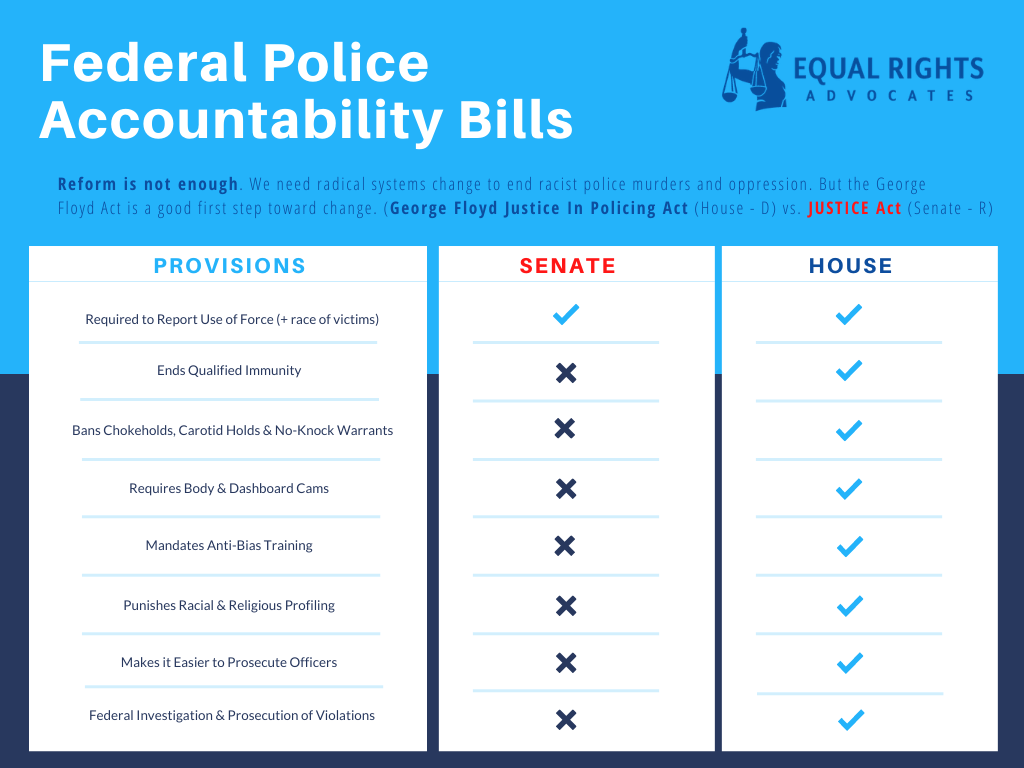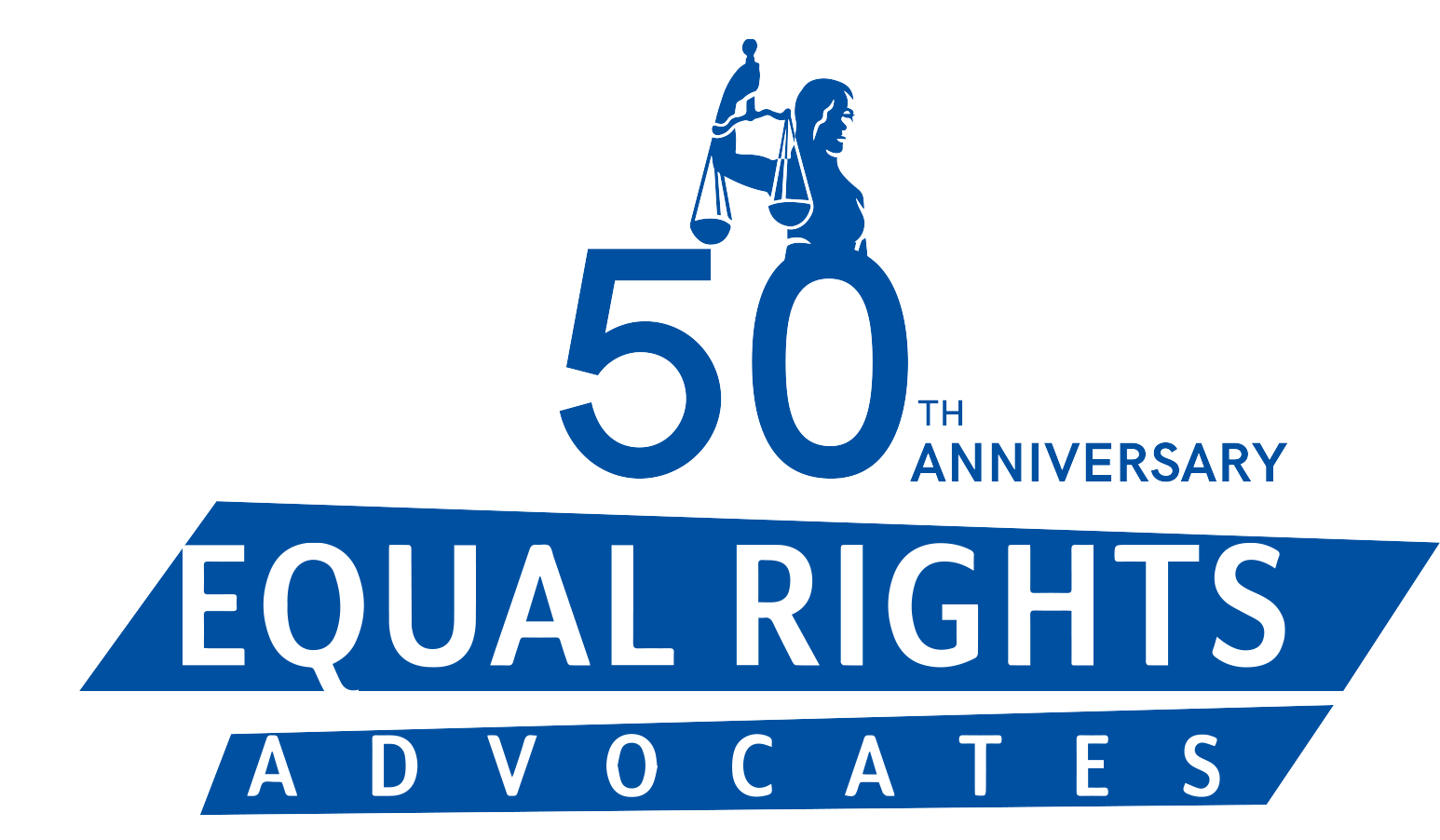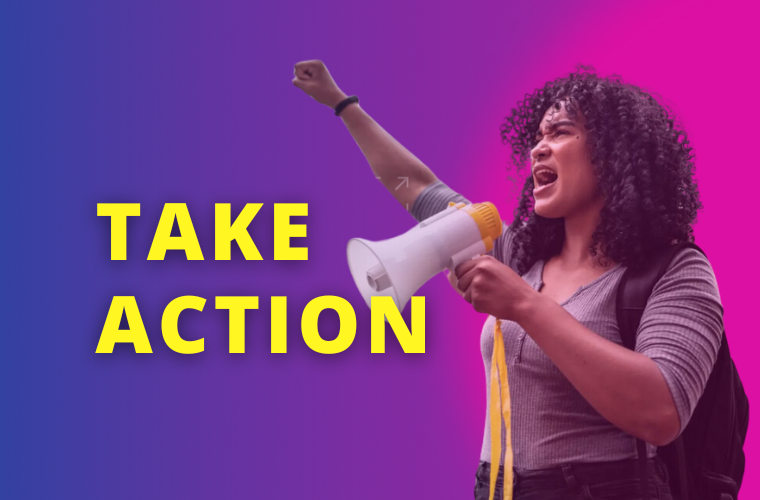

George Floyd Act vs. JUSTICE Act
A side-by-side analysis of 2 federal police reform bills
At this pivotal moment for our country, the majority of Americans say they would like to see police reform at the federal level to address rampant police brutality and police killings of U.S. people. In fact, a recent Reuters poll shows 82% of Americans want to ban police from using chokeholds, 83% want to ban racial profiling, and 92% want federal police to be required to wear body cameras.
For many, including civil rights advocates and proponents of anti-racist policies, these minimal reforms don’t go nearly far enough, especially since many cities that have enacted the above methods still frequently see police officers flouting these policies, resulting in continued harm to local communities, and often no consequences at all for offending officers. That’s why Equal Rights Advocates supports removing police and SROs from all schools, eliminating qualified immunity, reallocating funds away from police and toward public programs, and exploring radical solutions to fundamentally change our country’s deeply racist policing system. Read more about our views here.
As we work toward these goals, we at Equal Rights Advocates also endorse the House of Representatives’ George Floyd Justice in Policing Act of 2020 as a necessary first step toward change. (See the chart below for details.) This is not to be confused with the Senate Republicans’ JUSTICE Act, which does not propose systemic change or address rampant police murders of American people.
Continued below image.

The Republicans’ JUSTICE Act was introduced by Senator Tim Scott (R-SC) on June 17, two weeks after the Justice in Policing Act of 2020 was introduced by Democrats in the House. As opposed to the Democrats’ proposal, the Republicans’ JUSTICE Act does not include federal mandates to curb police use of force or ban harmful practices like chokeholds and no-knock warrants (which police used to murder Breonna Taylor); rather, the JUSTICE Act merely offers federal incentives for police departments that implement “best practices” and end “controversial” policing tactics, and would penalize departments that do not.
Here’s a side-by-side comparison of the two bills. Click here to tweet at your Senators in support of the George Floyd Justice in Policing Act of 2020.
|
Bill provisions |
George Floyd Justice in Policing Act of 2020 | JUSTICE Act |
|
Reforms qualified immunity so victims may recover damages |
✔
allows victims to seek damages for violations of their constitutional rights |
✘ does not address at all |
|
Ends racial, religious & discriminatory profiling |
✔
makes federal grant money contingent on prohibition of racial, religious, or discriminatory profiling, and mandates anti-bias training for all officers |
✘ does not mention racial profiling but would establish a program at the National Museum of African American History and Culture with a goal of training people to educate law enforcement about racial issues |
|
Mandates the use of body cameras & dashboard cameras |
✔ |
✘ body cameras required, but not dashboard cameras |
| Bans chokeholds, carotid holds & no-knock warrants | ✔
bans no-knock warrants in federal drug cases and withholds funds from state and local governments until they also ban. Bans chokeholds completely |
✘ incentivizes local agencies to confront choke hold policies with promise of federal funding, but does not ban them |
|
Establishes a National Police Misconduct Registry |
✔ |
✔ |
|
Establishes a Dept. of Justice Task Force to coordinate investigation, prosecution & enforcement efforts |
✔ |
✘ |
|
Requires state & local law enforcement agencies to report police use of force (including race & gender of victims) |
✔ |
✔ |
| Establishes new prosecutorial standard | ✔
Allows prosecution of officers for even minor misconduct and makes it easier to prove the officer acted “knowingly or with reckless disregard” |
✘ No change to prosecution & proof standards; Instead proposes de-escalation and bystander intervention training for officers |
Stay Connected & Take Action
- Get the Latest News & Information Sign up for Email Updates
- Sign Up for Action Alerts Join the Action Team
- Follow Us


